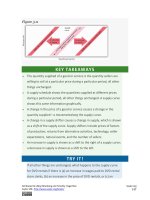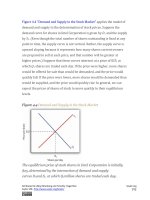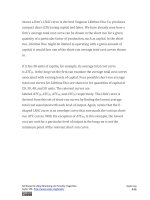Authors libby rittenberg 844
Bạn đang xem bản rút gọn của tài liệu. Xem và tải ngay bản đầy đủ của tài liệu tại đây (414.92 KB, 1 trang )
Public concern about the monopoly power of these giants led to a major
shift in U.S. policy. What had been an economic environment in which the
government rarely intervened in the affairs of private firms was gradually
transformed into an environment in which government agencies took on a
much more vigorous role. The first arena of intervention was antitrust
policy, which authorized the federal government to challenge the
monopoly power of firms head-on. The application of this policy, however,
has followed a wandering and rocky road.
The Sherman Antitrust Act
The Sherman Antitrust Act of 1890 remains the cornerstone of U.S.
antitrust policy. The Sherman Act outlawed contracts, combinations, and
conspiracies in restraint of trade.
An important issue in the interpretation of the Sherman Act concerns
which actions by firms areillegal per se, meaning illegal in and of itself
without regard to the circumstances under which it occurs. Shoplifting, for
example, is illegal per se; courts do not inquire whether shoplifters have a
good reason for stealing something in determining whether their acts are
illegal. One key question of interpretation is whether it is illegal per se to
control a large share of a market. Another is whether a merger that is likely
to produce substantial monopoly power is illegal per se.
Two landmark Supreme Court cases in 1911 in which the Sherman Act was
effectively used to break up Standard Oil and American Tobacco
enunciated the rule of reason, which holds that whether or not a particular
business practice is illegal depends on the circumstances surrounding the
action. In both cases, the companies held dominant market positions, but
Attributed to Libby Rittenberg and Timothy Tregarthen
Saylor URL: />
Saylor.org
844









